Jumping into the world of e-commerce is easier than ever. There are dozens of different e-commerce solutions available that can get your store up, running, and making sales before the end of Q1.
On the surface, it might seem like all of these different solutions do more or less the same thing. But dig a little deeper and you’ll quickly discover several differences between them.
To help you with your decision, we’ve put together this comparison guide between two popular e-commerce solutions: Magento Open Source and BigCommerce. We’ll cover questions like which one is easier to use, quicker to launch, cheaper to maintain, and comes equipped with more design flexibility.
By the end, you’ll know whether Magento Open Source or BigCommerce is a better fit for your business.
- Overview: Pros and Cons of Magento Open Source and BigCommerce
- Hosting
- Ease of Use
- Build Time
- Help and Support
- Maintenance
- Expandability
- SEO Features
- Pricing
Overview: Pros and Cons of Magento Open Source and BigCommerce

On the surface, Magento Open Source and BigCommerce offer the features you’d expect from e-commerce software, like category and product pages, an online shopping cart, and integration with the payment processing tool of your choice.
The similarities end there. Peek under the hood, and you’ll find two incredibly different e-commerce solutions:

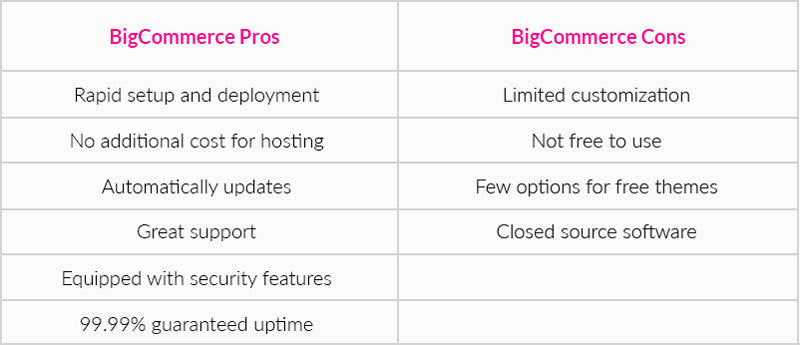
In fact, there are eight key areas in which BigCommerce and Magento differ, including:
- How you host your store
- How easy the software is to use
- How long it takes to build and launch a store
- Help and support available
- Level of maintenance required
- Store design flexibility
- Pre-equipped SEO features
- Pricing
The rest of this guide will dig into those differences in-depth.
Hosting
When it comes to hosting your store, you have two options: find and pay for your own hosting (known as an on-premise solution) or go with an e-commerce platform that hosts your store for you (known as a software-as-a-service, or SaaS solution).
BigCommerce is a SaaS solution. With BigCommerce, your store is hosted entirely on its servers. The platform leads the industry with 99.99% uptime and 100% uptime during Cyber Week for the past four years. You don’t need to worry about managing fraud protection, security, and payment card industry (PCI) compliance, because BigCommerce does it all for you.
Magento Open Source is an on-premise solution, so you’ll have to pay to have your store hosted through a service like HostGator or SiteGround. These hosts can guarantee similar uptime levels as BigCommerce, but the burden of fraud protection, PCI compliance, and keeping your customers’ information secure falls on you.
What’s more, the cost of all the infrastructure for an on-premise store with 100,000 visitors per month can be five times more expensive than the SaaS solution.
Winner: BigCommerce
Ease of Use
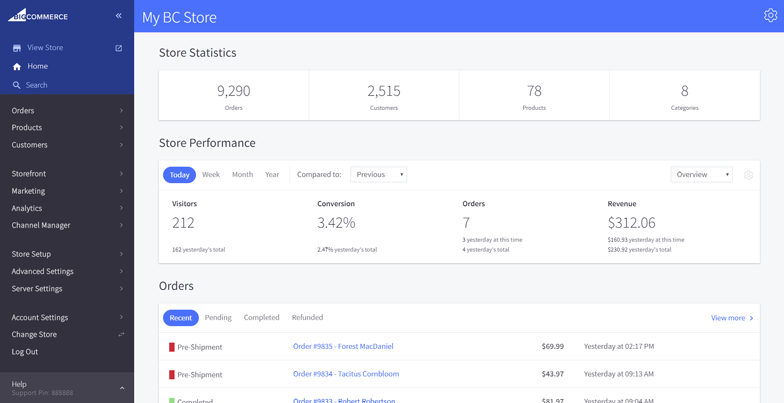
Both platforms are tricky to start using for someone with no web development experience, plain and simple. To get the most out of Magento, you need to know some code. You can design your store in BigCommerce without any code, but it’s a powerful tool with an abundance of features. Even though you’re technically clicking buttons in a visual dashboard, navigating those options comes with its own challenges.
However, with BigCommerce you don’t need to go through the hassle of integrating it with a hosting provider. You also don’t have to fuss with much maintenance or upgrades. Once you get your store launched, keeping it running is a breeze compared to Magento.
With Magneto, you need to integrate your hosting, wrangle code, schedule maintenance, and implement security features to keep your customers safe. All of that requires significantly more technical skill and time.
Winner: BigCommerce
Build Time
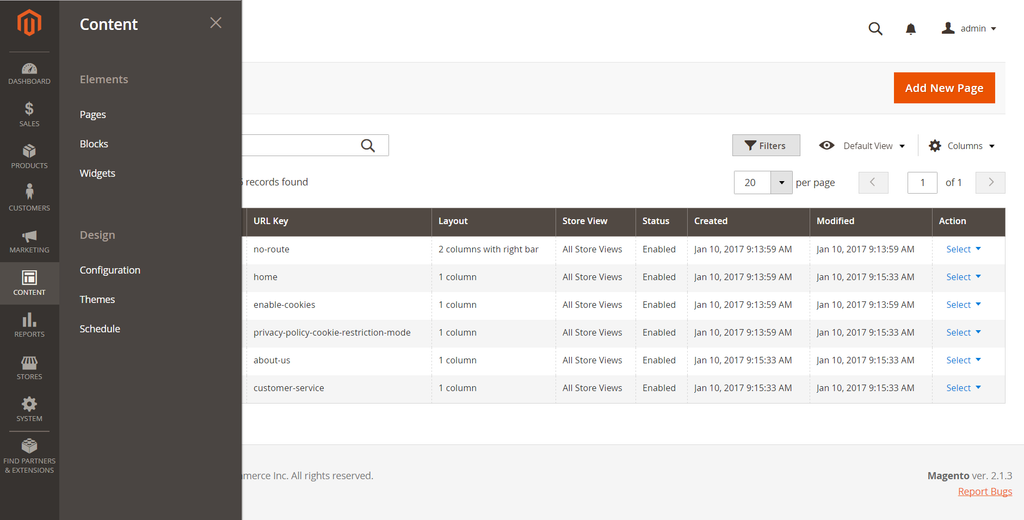
The question on every new web store owner’s mind is “how long will this take?” Getting your store on the internet might be quicker than ever, but it still takes time to build and deploy a new e-commerce site.
In this category, BigCommerce has a clear advantage. The average time it takes to launch an on-premise Magento store making $250,000 a year in sales is five to six months, while the average time for a BigCommerce store is three months. In some cases, BigCommerce stores can hop online in as little as 12 days, assuming you have an experienced team building your store for you.
Every day, week, or month your store is not online is time when your business is spending money instead of earning it. With your Magento store in the hands of an inexperienced developer, don’t be surprised if that launch date keeps getting pushed back—and the bills start piling up.
Winner: BigCommerce
Help and Support

Inevitably, you will need some help with your web store.
Fortunately, whichever route you go with, there’s BigCommerce documentation and Magento Open Source documentation to help you tackle common challenges.
However, if you’re hoping for some one-on-one support, BigCommerce is the only real option. As part of their service, you have access to their 24/7 phone and live chat support.
Since Magento Open Source is free, there’s no one-on-one support. The only people who can really make changes are your IT staff or consultants.
While Magento does offer a support forum full of helpful users who seem capable of solving most problems, this puts you at the whim of the community’s goodwill to get your issues addressed.
Winner: BigCommerce
Maintenance

If you have a BigCommerce store, you don’t have to worry about system maintenance, since BigCommerce automatically upgrades the software as needed. You don’t even have to worry about buying extra server capacity for times when your site traffic is higher.
The only time you might need to think about maintenance is if you have used BigCommerce’s API to integrate with other software, like marketing automation or payment processors, in which case you should monitor changes to the API.
Maintaining a Magento store is more tedious. The launch of Magento 2.0 a few years ago is the best example of this. People using an earlier version of the software had to reinstall and re-setup their entire store to use the new version.
The company currently offers security patches through June 2020 to keep earlier versions running, but it just goes to show how resistant Magento users have been about completely relaunching their stores. It’s a massive undertaking, after all.
BigCommerce users never have to think about dealing with such a monumental task.
Winner: BigCommerce
Expandability
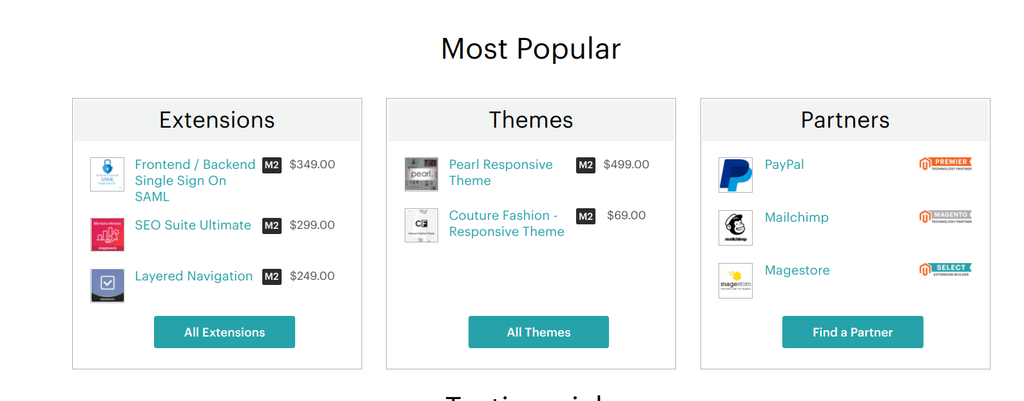
Magento’s massive flexibility is one of its most attractive features. A community of Magento developers has populated a marketplace of extensions that can increase the functionality of your store. And because Magento is open source, you can theoretically do just about anything to change how it works.
However, while it is technically possible to modify the code, Magento tends to run smoother when left untouched. If you truly want to tinker with the software’s code, strap in for lengthy and expensive development, as well as the possibility of performance or functionality issues.
That’s not to say you shouldn’t do it. Companies like Brand Alley and Christian Louboutin have successfully built their stores on the back of Magento Open Source.
With BigCommerce, you can’t dig into the code and drastically change how the software works. For 99% of users, this is never going to be an issue. With the right developer working for you, tons of available themes, and a large catalog of plugins, it’s possible to build a BigCommerce store that reflects your brand while delivering a unique, seamless user experience.
But for established retailers with an in-house IT team that wants total control over every detail of the design, Magento Open Source is the more flexible option.
Winner: Magento
Search Engine Optimization
To grow your business quickly, you need to optimize your store for attracting web traffic. Search engine optimization (SEO) helps your business rank at the top of search engine result pages so that more potential customers find your site. As far as marketing strategies go, SEO has among the highest ROI for e-commerce. Hence, the need to have SEO tools integrated in your e-commerce software.
Luckily, both Magento and BigCommerce come with SEO tools. You can easily perform essential tasks like customizing page URLs, adding information for meta tags, and optimizing your images for search.

Theoretically, you can add SEO features to Magento by tweaking its code. BigCommerce offers more SEO features from the get-go, including:
- Metadata - Page titles and descriptions that show up in search results
- Image Alt Tags - Descriptions that search engines read to know the content of images
- Mobile Optimization - Adjusts websites to fit different screen sizes
- Product Filtering - Groups products in a way that is easy for search engines to read
- Microdata - Information like ratings, prices, stock levels that can appear on search results
- 301 Redirects - Automatically sends users to a new URL if the old one changes
- CDN (Content Delivery Network) Systems - Helps files load faster by adjusting to how users are accessing sites
- HTTPS - Adds a layer of security that protects data for the business and customers
Use these features together with a solid SEO strategy and you’ve got yourself a recipe for rising to the top of search engines and growing your business.
Winner: BigCommerce
Pricing
Magento Open Source is free, but that doesn’t mean it’s the cheaper solution. You still need to pay for hosting, design, upgrades, and all the staff needed to keep the ship sailing smoothly.
The table below compares the costs for a store with 100,000 visitors per month and $250,000 in annual online sales. The “On-Premise” column illustrates what it would cost to build that store with Magento Open Source, while the “SaaS” column illustrates what it would cost with BigCommerce.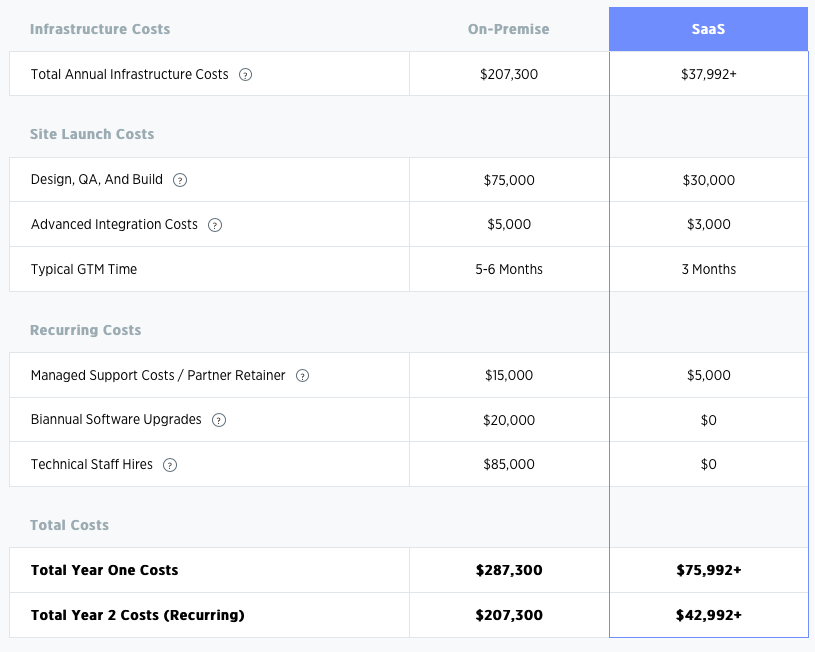
At the end of the day, the “free” solution can end up costing you four times more than the subscription solution. That’s not to mention all the time and troubleshooting it takes to get a Magento store up and running, which can also cost you sales.
This example is just for an established retailer, too. If you’re new in town and making $50,000 in annual online sales, BigCommerce could cost you more than 13 times less than using Magento Open source:
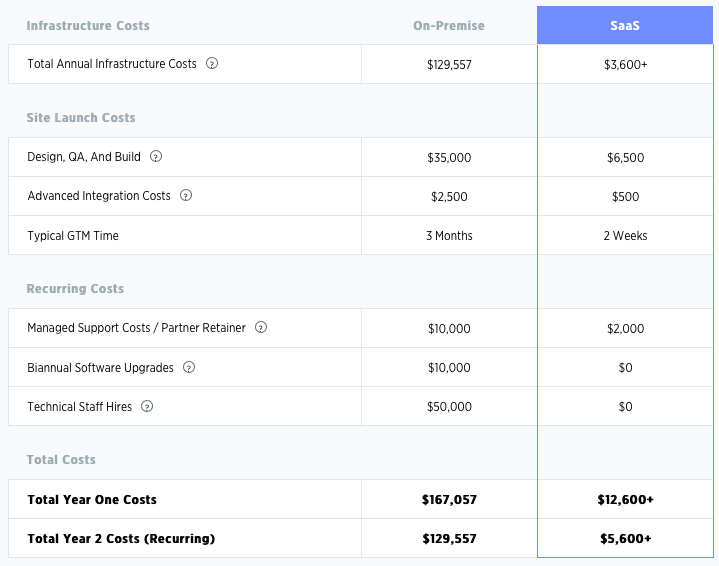
No matter which way you cut it, BigCommerce is likely going to save you money.
Winner: BigCommerce
BigCommerce vs. Magento Open Source: Which Solution is Best?
If complete control of customization is important to you and your business has the budget, time, and resources to devote to launching and maintaining it, a store built with Magento Open Source is your best option.
However, if your priority is to launch and grow your e-commerce store as quickly as possible, BigCommerce is the clear winner. With unbeatable go-to-market times, secure and reliable hosting, and minimal maintenance required, you can’t go wrong with BigCommerce.
Take the money you’d spend on hosting and maintaining a Magento Open Source store and put it toward hiring a web designer and developer that can transform your BigCommerce store into a beautiful expression of your brand. You’ll launch 50% faster and earn that money back in sales.
Final verdict: Both Magento Open Source and BigCommerce are capable tools, but for e-commerce business owners who want to simplify their web maintenance so they can focus on scaling, BigCommerce is the way to go.


